Introduction to Celtic Mythology
When it comes to the ancient Celts, the scope is not really about a singular group of people who dominated some specific region or realm. Instead, we are talking about a vast and variegated culture that made its presence felt all the way from the Iberian peninsula (Spain and Portugal) and Ireland to the frontiers of Liguria in Italy and the upper Danube.
Suffice it to say, their mythology rather mirrored this vast scope, with various tribes, chiefdoms, and even later kingdoms having their own set of folklore and pantheons. Essentially, what we know as Celtic mythology (and whom we know as Celtic gods and goddesses) is borrowed from a patchwork of oral traditions and local tales that were conceived in pre-Christian Gaul (France), Iberia, Britain, and Ireland.
Furthermore, these regional Celtic gods had their cognates and associated deities in other Celtic cultures, with the apt example of Lugus – as he was known in Gaul, and Lugh – as he was known in Ireland.
To that end, in this article, we have mainly focused on the ancient Celtic gods and goddesses of Ireland and Gaul, with the former having its distinct mythical narrative preserved in part by medieval Irish literature. So, without further ado, let us take a gander at 15 ancient Celtic gods and goddesses you should know about.
Contents
- Introduction to Celtic Mythology
- Irish/Gaelic Gods –
- Anu or Danu/Dana – The Primordial Goddess of Nature
- Dagda – The Cheerful Chief of Gods
- Aengus (Angus) /Aonghus – The Youthful Celtic God of Love
- Lugus / Lugh – The Courageous Warrior God
- Mórrígan – The Mysterious Celtic Goddess of Fate
- Brigid – The ‘Triple’ Goddess of Healing
- Eriu/Eire – The Goddess of ‘Ireland’
- Gallic Gods –
Irish/Gaelic Gods –
Anu or Danu/Dana – The Primordial Goddess of Nature
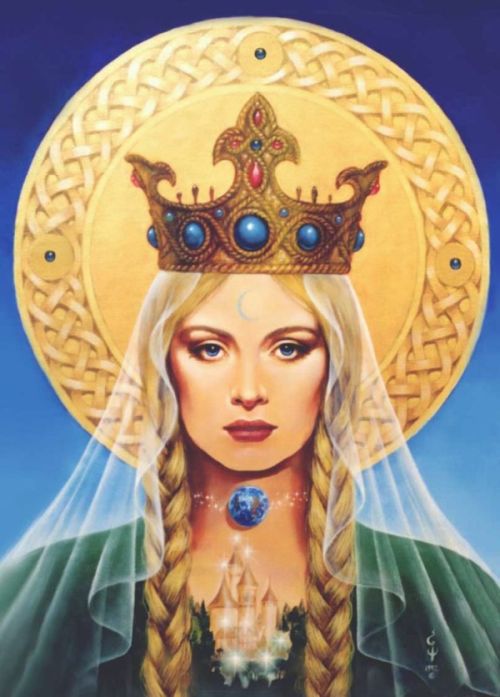
Anu (also known as Ana, Dana, Danu, and Annan) was counted among the oldest of the ancient Celtic goddesses in Ireland. She possibly embodied the primordial flora and fauna, with her epithets describing her as a mother goddess. Thus the Celtic mother goddess, often portrayed as a beautiful and mature woman, was associated with nature and the spiritual essence of nature, while also representing the contrasting (yet cyclic) aspects of prosperity, wisdom, death, and regeneration.
The role of Anu is very much pronounced in Irish mythology, where she is often referred to as Anu, Danu, or Dana. She is considered the divine mother or matriarch of the Tuatha Dé Danann (‘People of Dana’ or ‘Children of Goddess Danu’) – the supernatural race (or tribe) of Celtic gods that possibly formed one of the major pantheons of pre-Christian Gaelic Ireland.
To that end, her cult center was probably based in Munster, while two hills in County Kerry are still known as Da Chich Anann (‘The Paps of Anu’). The Don in Welsh mythology was also often associated with her matronly Irish counterpart.
As for the historical side of affairs, Anu (or related deities), in spite of her relative lack of references in folkloric circles, was counted among the major Celtic gods not only in Ireland but also in Britain and Gaul.
Dagda – The Cheerful Chief of Gods
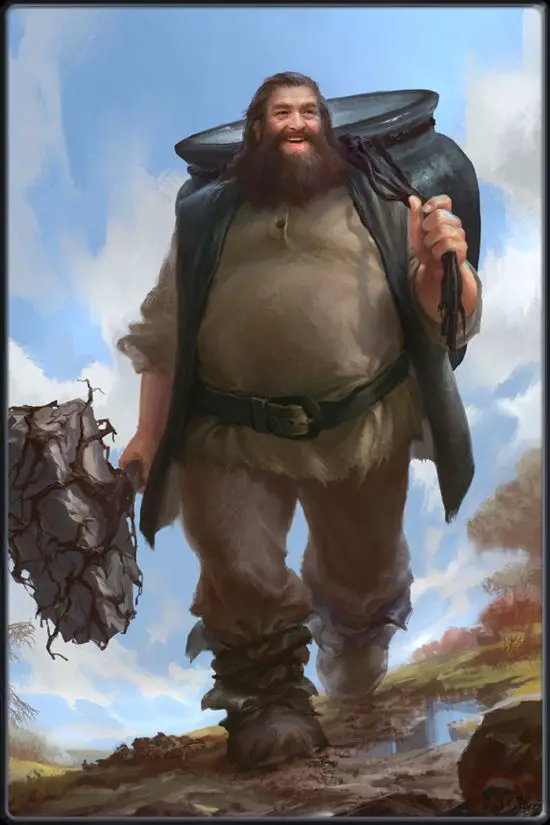
The Dagda (An Dagda – ‘the Good God’) was the most important father-figure deity among the Irish Celtic gods and goddesses. Revered as the leader of the Tuatha dé Danann tribe of gods, he was usually associated with fertility, agriculture, weather, and masculine strength, while also embodying the aspects of magic, wisdom, knowledge, and Druidry.
These facets do explain his renown and veneration among the Celtic druids. Many of the aspects also bear striking similarities to the divine characteristics of Odin, the chieftain of the Æsir tribe of ancient Norse gods.
Reinforcing his nature as the father figure among the Celtic gods (especially in Gaelic Ireland), the Dagda was often represented as a plump, old man wearing a rustic tunic (that barely covered his rear end) who carried an imposing magic staff/club (lorg mór) that could slay nine people with a single blow and yet resurrect the dead to life.
Curiously enough in Irish folklore, the Celtic god also carried a huge magic cauldron (coire ansic) that was bottomless. This was accompanied by a humongous ladle that could fit two people, thus alluding to his power of abundance and penchant for food. And in spite of his seemingly oafish physical characteristics, the Dagda took numerous lovers, including Morrigan – the Celtic goddess of war and fate (discussed later).
Aengus (Angus) /Aonghus – The Youthful Celtic God of Love
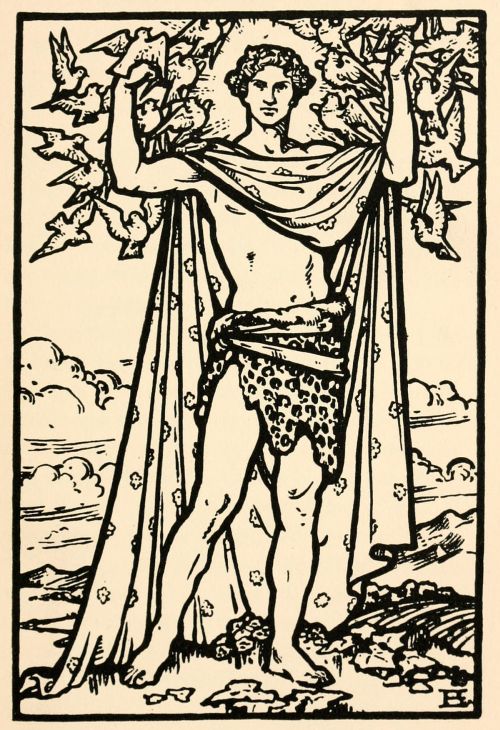
Aengus (or Aonghus) – meaning ‘true vigor’, was the son of the Dagda and river goddess Bionn. He was the Celtic deity of love, youth, and even poetic inspiration. In Irish folklore, to cover up his illicit affair and consequent pregnancy of Bionn, the Dagda (who was the leader of the Celtic gods and could magically control the weather) made the sun stand still for nine months, which resulted in Aengus being birthed in just a single day.
In any case, Aengus turned out to be a lively man with a charming (if somewhat whimsical) character who always had four birds hovering and chirping around his head. It was said that Aengus has his dwelling around Newgrange after he had tricked his father Dagda into giving him possession of the Brú na Bóinne – the spiritual abode of the chieftain of the Tuatha De Danann.
But his status in ancient Ireland as a patron of young lovers was borne by his own love for Caer Ibormeith, a girl who was seen in a dream by the god. Aengus was then able to find her and marry her after instantly recognizing his muse as one of the swans (since Caer turned into a swan every alternate year).
As for the historical side of affairs, Aengus, with its epithet Mac Óg (‘young son’), was possibly linked with Maponos, one of the Celtic gods of youth, venerated in both ancient Britain and Gaul.
Lugus / Lugh – The Courageous Warrior God
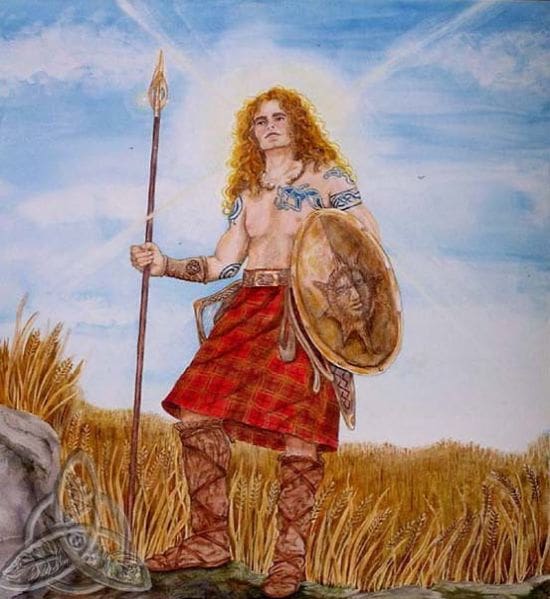
Although rarely mentioned in inscriptions, Lugos or Lugus (as known in Gaul) or his cognates Lugh Lámhfhada (Lugh of the Long Arm) in Gaelic Irish and Lleu Llaw Gyffes (Lleu of the Skillful Hand) in Welsh, was an important deity among the Celtic gods and goddesses.
Often revered as the resplendent sun god, Lugus or Lugh was also perceived as a dashing (and often youthful) warrior responsible for slaying Balor – the one-eyed chief of the Formorii, the old adversaries of the Tuatha Dé Danann.
The heroic act achieved by a precise slingshot into Balor’s eye heralded the ascendance of the Tuatha Dé Danann as the dominant tribe of gods in Ireland (over the Formorii, who were portrayed with darker characteristics). Interestingly enough, in spite of being the champion of the Tuath Dé, in the narrative sense, Lugh himself descended from the one-eyed (or one-limbed) Formorii, with Balor being his maternal grandfather.
Also known as the Samildánach (Skilled in All the Arts), Lugh (or Lug) was additionally associated with thunderstorms, ravens, and even lynxes. And befitting his status as one of the preeminent Celtic gods, he was often portrayed with his armor, helmet, and invincible spear Gae Assail.
In the mythical narrative, Lugh was perceived as the divine father of Cú Chulainn, the most famous of Irish heroes, whose character and feats bore similarities to both Greek Heracles (Hercules) and Persian Rostam.
As for history, due to the Roman cultural trait of interpretatio Romana, Lugus was possibly perceived as the Gallic equivalent of the Roman god Mercury – and as such, the ancient settlement of Lugdunum (modern Lyon) had its place name derived from the Celtic god – meaning “fort of Lugus”. Quite intriguingly, the very term ‘leprechaun’ is also possibly derived from Luchorpain or “little stopping Lugh” – a blanket term used for the fairy in Gaelic.
Mórrígan – The Mysterious Celtic Goddess of Fate
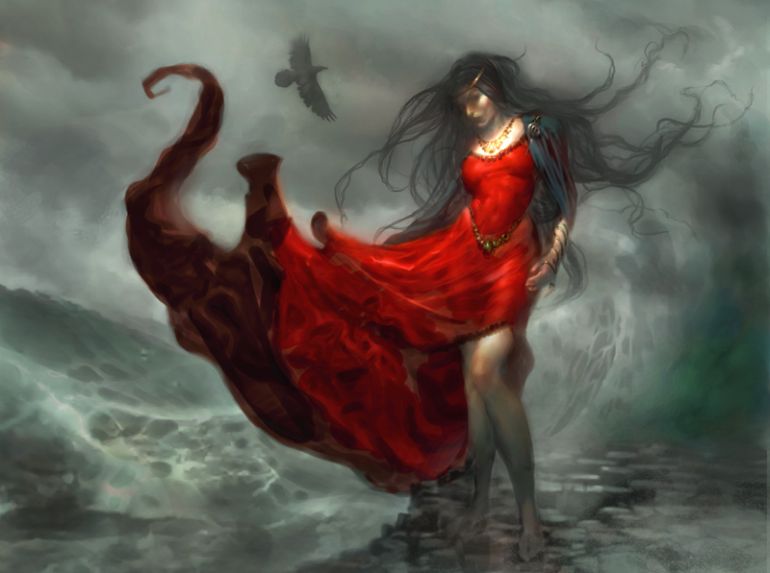
Mórrígan or Morrigan (also known as Morrígu) was perceived as a mysterious and rather ominous female deity among the Irish Celtic gods and goddesses, associated with both war and fate. In modern Irish, her name Mór-Ríoghain roughly translates to the ‘phantom queen’.
Befitting this cryptic epithet, in Celtic mythology, Morrigan was capable of shapeshifting (who usually transformed into a crow – the badb) and foretelling doom, while also inciting men into a war frenzy. This suggests how Morrigan was possibly perceived as a war goddess.
In contrast to these seemingly chaotic and ‘war-mongering’ attributes, Morrigan was possibly also venerated as a Celtic goddess of sovereignty who acted as the symbolic guardian of the land and its people.
Goddess Morrigan was often associated with other war goddesses like Macha, Badb, and Nemain. To that end, sometimes she was presented as a composite figure of the trinity (who were also collectively portrayed as a group of beautiful women having the ability to transform into balefully screeching crows over battlefields).
And talking of the narrative in Celtic myth, Morrigan was romantically linked with the aforementioned Dagda (and had a tryst with the chieftain of gods on Samhain). Consequently, she magically aided him against the war with the Formorii.
On the other hand, a nascent sinister aspect of the goddess is revealed when Morrigan settled in triumph on the shoulder of the dying hero Cú Chulainn – after the hero unknowingly wounded the goddess in her shapeshifted form. In essence, her characterizations and prophetic powers are often associated with the premonitions of a warrior’s violent death, thus suggesting a link to the folkloric Banshees – derived from bean sidhe (‘woman of the fairies’).
Brigid – The ‘Triple’ Goddess of Healing
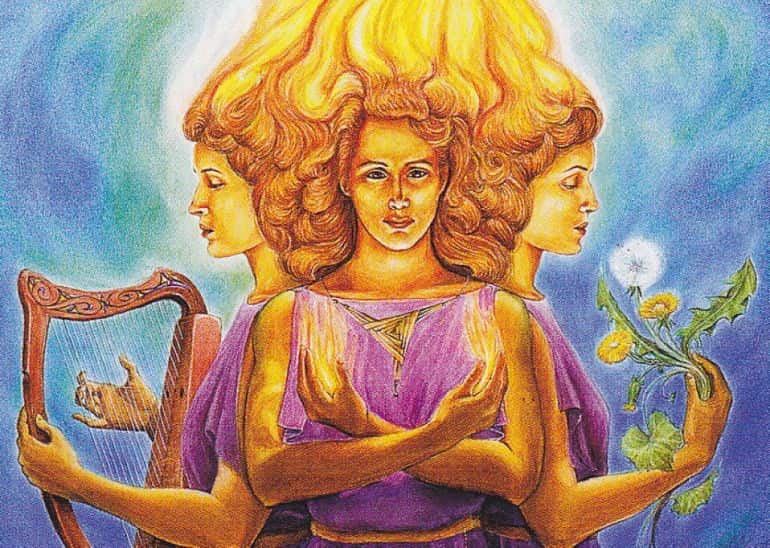
In contrast to the brooding aspects of Morrigan, Brigid, in pre-Christianity Ireland, was regarded as the Celtic goddess of healing, spring season, fertility, and even smithcraft. In the mythical narrative, she is the daughter of the Dagda and thus a member of the Tuatha Dé Danann.
Curiously enough, in Lebor Gabála Érenn (The Book of the Taking of Ireland – a collection of poems compiled in the 11th century AD), she is mentioned to have quite a few domesticated animals. Ranging from oxen, the king of boars, to sheep, these critters used to cry out as a warning to the fertility goddess.
Beyond the narrative, it is the history of Brigid as one of the major Celtic gods in Ireland that fascinates many aficionados. To that end, continuing the tradition of the Indo-European dawn goddess, Brigid was possibly sometimes venerated in her three aspects – the healer, the poet, and the smith. In essence, she may have been a triple deity (the composite of three entities).
Furthermore, her eminence (in at least Ireland) stems from the possibility that pre-Christian Brigid was syncretized in medieval times with the Catholic Saint Brigid of Kildare. This incredible form of syncretism hints at how the early medieval Christian monks played their part in adapting to the changing religious landscape of the realm by retaining a few of the older native pagan elements like Celtic myths.
Eriu/Eire – The Goddess of ‘Ireland’
Eriu (modern Irish – Eire), regarded as one of the Celtic gods among the Tuatha Dé Danann, has the distinction of having an entire nation named after her. To that end, the very term Ireland comes from ‘Eriu’ (as the realm was known in the olden times), and thus her modern name Eire is modified to suit the current pronunciation of Ireland. Essentially, Eriu serves as the modern personification of Ireland.
As for the mythological side of affairs, the Irish goddess Eriu in many ways symbolized the legacy of the Tuatha Dé Danann after they were defeated by the Milesians. In the related narrative, when the Milesians invaded Ireland from Galicia, Eriu and her two sisters Banba and Fotla went forth and greeted the newcomers.
As a courtesy, the Milesians promised to name the land after her. But unfortunately for the Tuatha Dé Danann, they were only given the underground to dwell in by the victorious Milesians. And this realm (underneath the Sidhe mounds) was perceived as the passage to the Celtic Otherworld. Thus, the Otherworld was associated with the supernatural, mystical world where fairies and gods lived.
Gallic Gods –
Belenus – The Effulgent Sun God
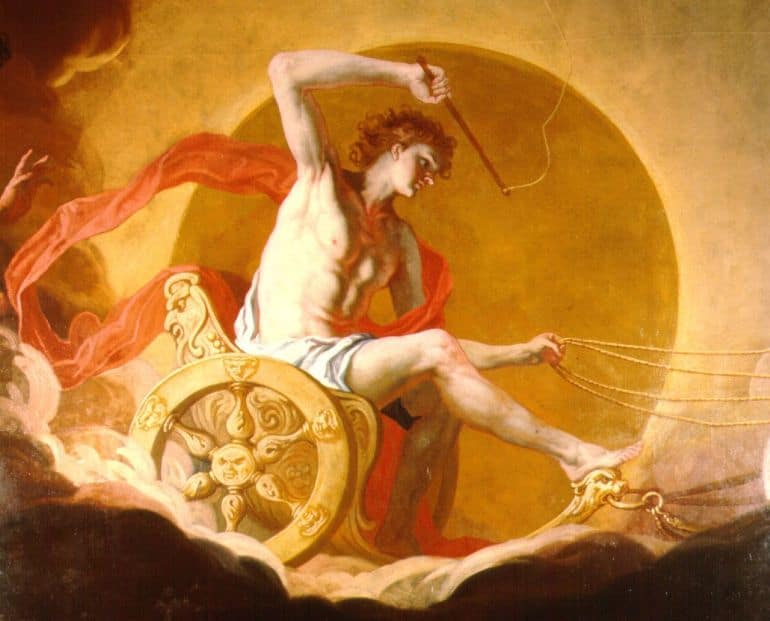
Belenus (also known as Belenos, Bel, and Beli Mawr) was one of the most ancient and most widely worshiped ancient Celtic gods, venerated in Continental Europe, Britain, and Ireland. Known by his epithet ‘Fair Shining One’, Belenus was the quintessential sun god in Celtic mythology
He was also associated with the horse and the wheel – and their composites tended to portray him as the effulgent Sun God gloriously riding across the sky in his horse-drawn chariot (much like the Indian god Surya). Other representations depict Belenus as only riding his horse while throwing thunderbolts and using the wheel as his shield.
Now given his eminence in ancient times, it doesn’t come as a surprise that the Romans identified him with one of their own syncretic Greco-Roman deities – Apollo, the archetype of the youthful god of light.
Thus over time, Belenus was also venerated as the Celtic healing god, alluding to the regenerative aspects of Apollo. Consequently, healing shrines dedicated to the dual entities were found across Western Europe, including the one at Sainte-Sabine in Burgundy and even others as far away as Inveresk in Scotland.
In fact, the cult of Belenus was so strong in some parts of the continent that the god was regarded as the patron deity of Aquileia (the ancient Roman city situated at the ‘head’ of the Adriatic sea) as well as the national god of Noricum (comprising parts of modern-day Austria and Slovenia).
Even in our modern context, the legacy of Belenus (or Bel) survives through the continued festival of Beltane (‘Fires of Bel’) which was originally celebrated to signify the healing powers of the spring sun. Interestingly enough, the familiar Welsh name ‘Llywelyn’ also comes from two Celtic sun gods, since it is derived from Lugubelinos – the composite of Lugus (or Lleu in Welsh) and Belenos (or Belyn in Welsh).
Toutatis – The Guardian God of Gauls
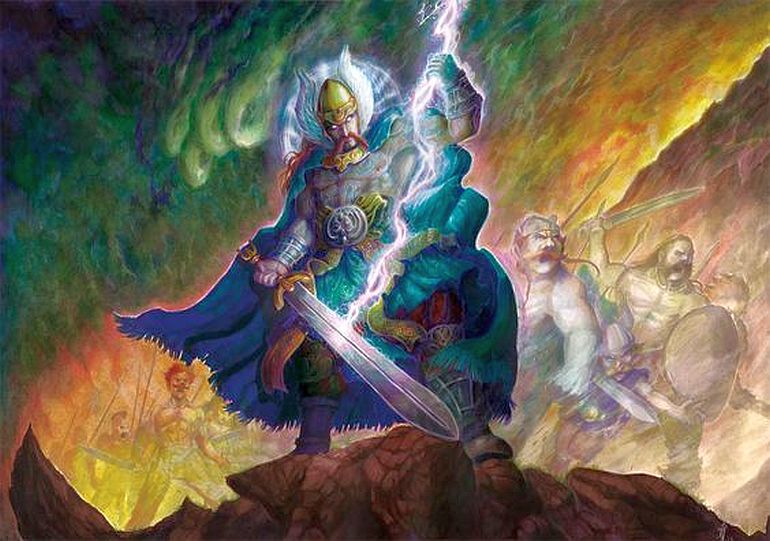
From the Gaelic scope, we move on to ancient Gaul and their Celtic gods. To that end, in our modern context, Toutatis is made famous by the Asterix comics catchphrase ‘By Toutatis!’. And while not much is known about the mythological scope, Toutatis (or Teutates) was probably quite an important Celtic deity, with his very name roughly translating to ‘God of the People’.
In essence, he was possibly perceived as a crucial guardian entity who took up the role of the tribe protector, and thus his inscribed name (TOT – as pictured above) has been found in quite a few ancient artifacts in both Roman Britain and Gaul.
Ist century Roman poet Lucan mentioned Teutates as one of the three major Celtic gods (along with Esus and Taranis) And by the aforementioned trait of interpretatio Romana, Toutatis was seen as the equivalent of both Mars and Mercury. To that end, a Romano-Celtic healing god Lenus (or Lenus Mars) was possibly seen as the benevolent extension of Toutatis.
On the macabre side of affairs, later Roman commentators mentioned how victims were sacrificed in the god’s name by plunging their heads into a vat of unknown liquid (possibly ale). Interestingly enough, Toutatis possibly also had his Irish counterpart in the form of Tuathal Techtmar, the legendary conqueror of Ireland – whose name originally referred to the eponymous deity Teuto-valos (‘Ruler of people’).
Camulos – The God of War
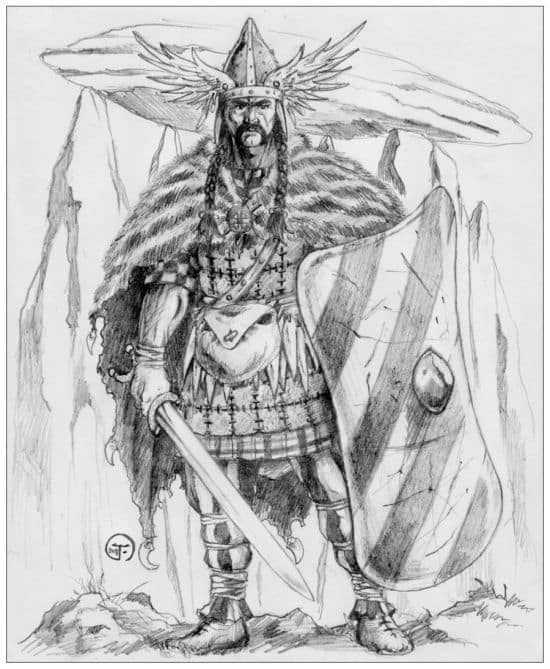
Rather than being counted among the core Celtic gods, Camulos was possibly more of a Romano-Celtic deity, often associated with Mars (or Greek Ares), and thus was perceived as a Gallic god of war. However, his origins lie as the tribal god of the Remi, a Belgic tribe that dominated north-eastern Gaul (comprising modern-day Belgium and parts of both Netherlands and Germany).
In any case, Camulos was regarded as one of the important ancient Celtic gods (or Romano-Celtic deities) in Britain, judging by his name being given to several places in the region, including Camulodunum, the ancient Roman name for Colchester in Essex, England. And while, initially, he was just worshipped on stones where wreaths of oak were placed, later characterizations portrayed Camulos as having horns of ram on his head.
Taranis – The God of Thunder

Taranis was widely known as one of the major gods of Gaul during Roman times His origins probably harked back to far older (and ancient) Celtic traditions. As we mentioned before, according to Lucan, Taranis formed a triad of Celtic gods (along with Toutatis and Esus) As such, he was regarded as the god of thunder, thus drawing obvious comparisons to Roman Jupiter (and Greek Zeus).
Even in the visual scale, the god was portrayed with a lightning bolt, thus bearing more similarity to Zeus. However, literally, on the other hand, Taranis was also depicted with a solar wheel – one of the most prevalent symbols found on Celtic artifacts, which suggests his eminence in the related pantheon.
Furthermore, Taranis was associated with fire, be it the fire of the sky or the fire of the air. This led to some disturbing allegations by ancient Roman authors, including Strabo and Julius Caesar, who described sacrificial victims being burned inside ‘wicker man’ constructs to appease the deity.
In any case, interestingly enough, the very name Taranis (as mentioned by Lucan) is unattested when it comes to historical inscriptions, though related forms like Tanarus and Taranucno- have been identified by archaeologists. And talking of archaeology, the cult of Taranis probably carried and venerated small votive wheels known as Rouelles that symbolized the solar shape.
Cernunnos – The Lord of the Wild Things
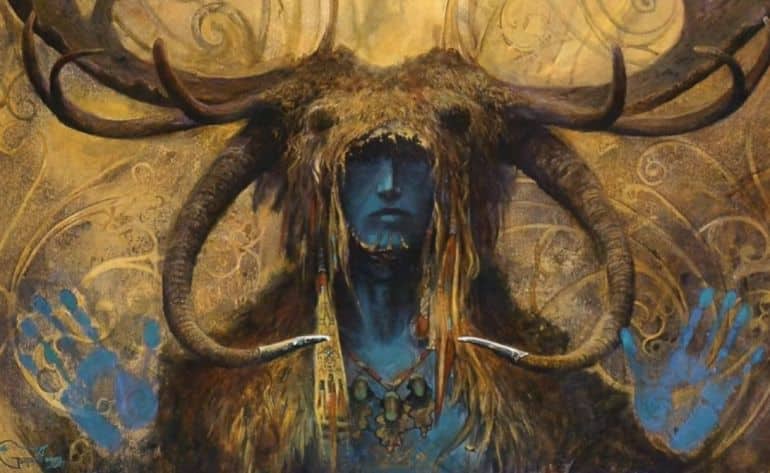
Cernunnos is arguably the most visually impressive and rather portentous of ancient Celtic gods. The very term ‘Cernunnos’ is actually the conventional name given to the deity ‘Horned One’. So, as the horned god of Celtic polytheism, Cernunnos is often associated with horned animals, forests, fertility, and even wealth. His very depiction mirrors such attributes, with the conspicuous antlers of the stag on his head and the poetic epithets like the ‘Lord of the Wild Things’.
As for history, there is only single known evidence for the full name Cernunnos, and it comes from the Pillar of the Boatmen carved by the Gaulish sailors circa 14 AD. Considered one of the important reliefs of the Gallo-Roman religion, the pillar additionally depicts other Roman deities like Jupiter and Vulcan. Interestingly enough, Julius Caesar possibly linked Cernunnos to the Dis Pater – the god of the Roman underworld.
However, the visual representations of the horned deity (as one of the Celtic gods) predate such inscriptions and names by centuries. To that end, one of the apt examples would pertain to an antlered human figure featured in a 7th-4th century BC dated petroglyph in Cisalpine Gaul.
Other related horned figures were worshipped by the Celtiberians – based in what is now modern-day Spain and Portugal. And the most well-known depiction of Cernunnos can be found on the Gundestrup Cauldron (circa 1st century BC).
Ogmios / Ogma – The God of Eloquence
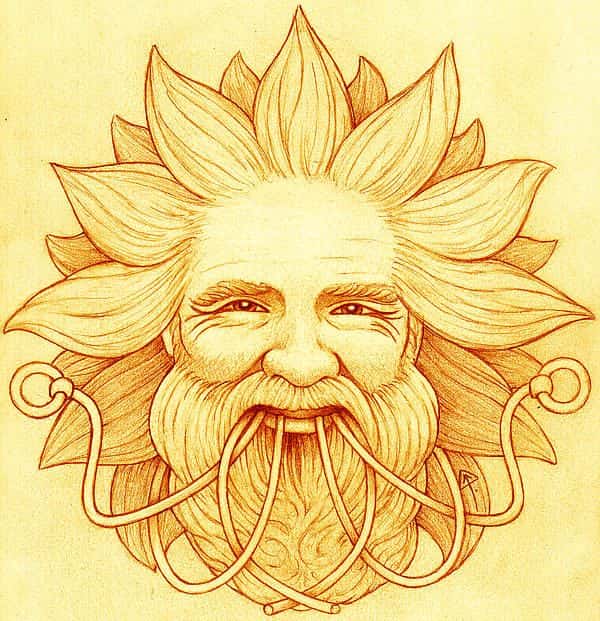
In most ancient mythical narratives, we rarely come across divine entities that are solely associated with language. Well, Ogmios, as one of the ancient Celtic gods, goes against this ‘trend’ since he was simply considered the god of eloquence.
2nd century Hellenized Syrian satirist and rhetorician Lucian of Samosata mentioned how Ogmios was like the older version of Hercules in appearance, with both wearing lion skins and carrying clubs and bows. However, Ogmios does one better on the ‘bling’ factor by having long chains (made of amber and gold) attached to his tongue (inside his smiling mouth) that connect him with his group of followers.
Essentially, the visual scope symbolically represented how the Celtic god had the power of eloquence and persuasion to bind his followers to him. Ogmios’ later Irish equivalent Ogma also plays a crucial role in the Gaelic myths. Regarded as the son of Dagda, and thus a member of the Tuatha Dé Danann, Ogma is credited as being the inventor of Ogham – the earliest system of writing in Ireland.
Given the epithet of the ‘Lord of Knowledge’, Ogam was also portrayed as a capable warrior who went to slay the Fomorian king Indech and claim a magical sword that could recount his heroic deeds. In another version, he dies along with his enemy Indech in single combat.
Grannus – The God of Hot Springs
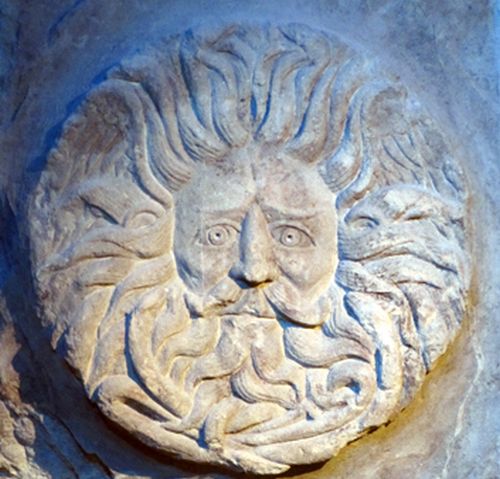
In another fascinating example of Gallo-Roman syncretism, Grannus was perceived as one of the (originally) Celtic gods of healing, who was later associated with Apollo and often venerated as a composite deity of Apollo-Grannus in the Roman world. To that end, Grannus was typically linked to the hot springs (or healing springs). And he was often a god worshipped in conjunction with Sirona – a Celtic healing goddess.
Unsurprisingly, his cult centers were often focused on areas with thermal and mineral springs, with the most famous one pertaining to Aquae Granni, which was later known as Aachen – the royal center of the later Carolingian Empire under Charlemagne. And it should be noted that Grannus was also regarded as a solar deity, thus symbolically linking his powers to that of the healing rays of the sun.
Epona – The Protector Goddess of Horses
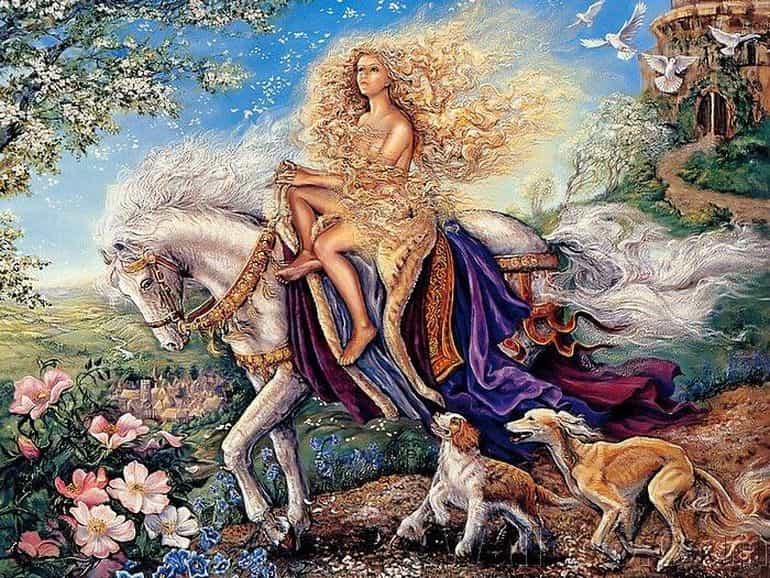
Beyond syncretism, there were also sole Celtic gods worshipped in the pantheon of the ancient Gallo-Roman religion and even Rome itself. Epona belonged to the rare second category.
Regarded as the female deity and protector of horses, donkeys, and mules (etymologically, the word ‘Epona’ is derived from Proto-Celtic *ekwos – meaning horse), the Celtic horse goddess was also possibly associated with fertility – given the visual cues of the patera, cornucopia, and foals in some of her extant sculptures.
And talking of depictions, most of the dedicatory inscriptions to Epona (found by archaeologists) were made in Latin (as opposed to Celtic), thus suggesting her popularity in the Roman world.
In fact, with her aspect as the protector of horses, Epona was favored and venerated by the auxiliary cavalrymen of the Roman Empire, especially the renowned Imperial Horse Guards (Equites Singulares Augusti), who were the cavalry counterparts to the Praetorian Guards.
As for the other Celtic cultures, it has been argued in academic circles that Epona possibly inspired the Welsh mythical/folkloric character of Rhiannon – the tenacious lady of the Otherworld.
Featured Image – Cú Chulainn ‘The Hound of Ulster’ in Battle. Painting by Joseph Christian Leyendecker.
Book Reference – The Encyclopedia of Mythology (Edited by Arthur Cotterell)
And in case we have not attributed or misattributed any image, artwork or photograph, we apologize in advance. Please let us know via the ‘Contact Us’ link, provided both above the top bar and at the bottom bar of the page.

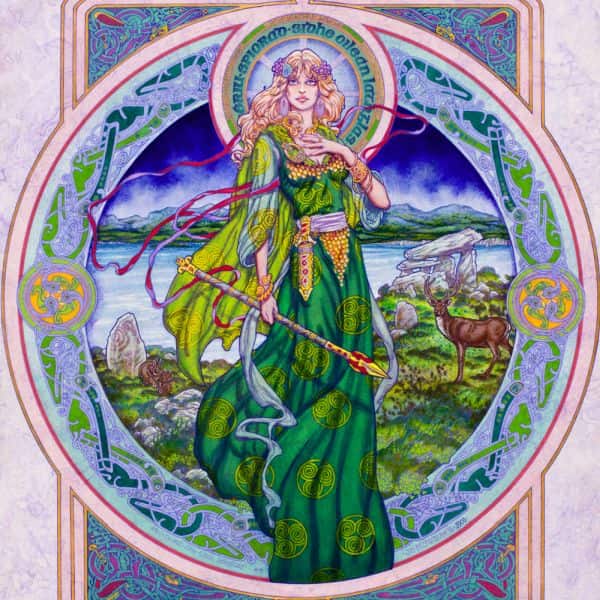
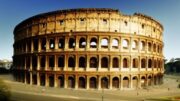
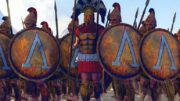
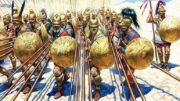
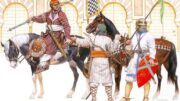
Be the first to comment on "15 Ancient Celtic Gods and Goddesses You Should Know About"